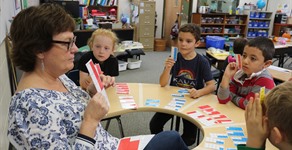Report to the Community 2018-2019
At this time of year, each school in the Louis Riel School Division is asked to share a report to their school community to highlight some of the accomplishments from the previous school year.
Deciding on what to highlight from the 2018-2019 school year is not an easy task. Darwin School staff work hard to ensure that all students have a strong sense of belonging; they are supported to develop mastery in and out of the classroom and we work together to ensure their understanding of independence and generosity is modelled at school.
Building our school community is important work at Darwin School and last year we welcomed new families from Brazil, Nigeria, Germany, Ukraine, China, South Korea, India and Pakistan. We hosted several students from the LRSD International Student Program and with each new family that arrived, the diversity of our school community expanded, and we became a stronger school community.
The highlighted accomplishment I would like to focus on in this Report to the Community revolves around literacy and the importance of building strong readers at Darwin School. It was the combined effort of individual and collective professional learning from Darwin School staff; a strong collaboration with members of the LRSD Instructional Team (Vanessa Thibault, Kimberley Adair-Gagnon and Cathy-Ann Winters) as well as student and staff risk taking which resulted in improved student learning in the area of reading comprehension.
At Darwin School, one of our goals in the 2018-2019 school year was to focus on reading comprehension to increase the level of student engagement and overall academic achievement in English Language Arts.
To accomplish our goals, Connie Bagrie (Grade 1&2), Nissa Chmilowsky (Grade 5&6), Caitlin Munro (Grade 5&6), Kerri Bush (Student Services) and Nicholas Kelly (Principal) were all involved in the Personalized Professional Learning model within the Louis Riel School Division. To find out more about the Personalized Professional Learning model, please refer to pages 37 & 38 in the LRSD Annual Report to the Community.
This professional learning model provided teachers with four days of professional learning alongside the LRSD Instructional Support Team as well as job embedded professional learning at Darwin School. Over the course of the 2018-2019 school year, these teacher leaders worked with their colleagues in our K-6 classrooms on Reciprocal Teaching strategies by studying the work of Lori D. Oczkus. With a strong focus on the Fab 4 Reciprocal Teaching Strategies: Predicting, Questioning, Clarifying and Summarizing, staff engaged in a process of professional learning and enhanced instructional practice with all students in kindergarten through grade six. To learn more about Reciprocal Teaching follow the link to a description of Oczkus’ s work.
John Hattie identifies Reciprocal Teaching as a significant influence on achievement with respect to reading comprehension. It has an effect size of 0.74 and it only made sense to put our time and energy into improving instructional practices that resulted in the desired effect of increased reading comprehension skills for our students.
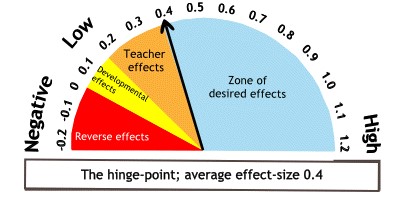
Choosing to focus on Reciprocal Teaching allowed our teacher leaders to develop a plan that would bring students in kindergarten through grade four together as they learned how to predict, question, clarify and summarize. Darwin School staff were quick to add a fifth strategy of connecting.
While our K-4 staff focused on elaborate and engaging strategy launches, complete with classroom teachers in costumes, the growth occurred by using common literacy block time for direct instruction, student risk taking and lots of opportunity to practice. Students were engaged in using Reciprocal Teaching strategies as they worked with their classroom teacher, student services, teacher librarians and library assistants as well as the school principal. It was all hands on deck with a common goal and a clear path to succeed.
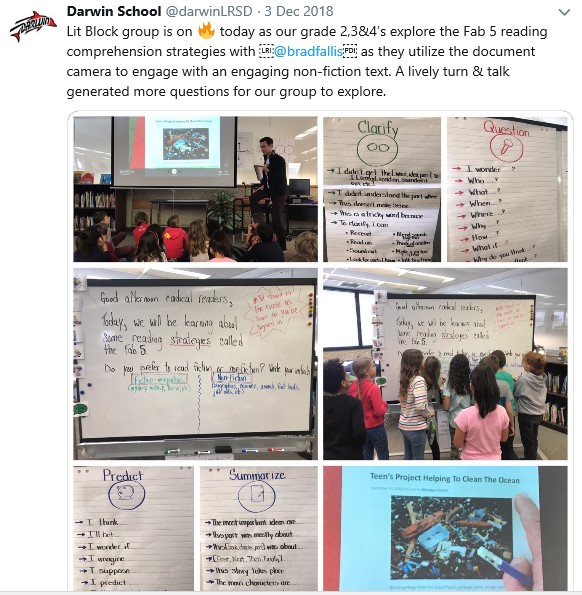
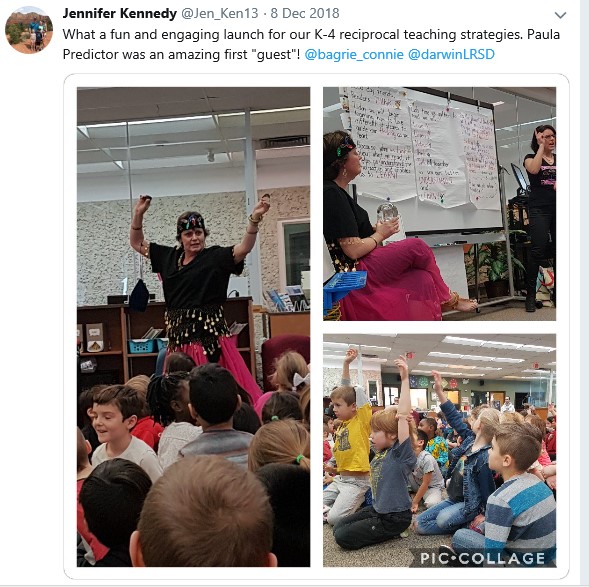
While our K-4 students were off and running with their special launch events and literacy block sessions, our middle years staff implemented Reciprocal Teaching through the grade six Social Studies curriculum. They created small groups for specialized instruction around pre-Confederation content with an emphasis on using the Fab 5 reading comprehension strategies to build on their overall historical knowledge while acquiring additional reading comprehension strategies and strengthening their understanding of how they are all interconnected. The grade 5&6 teaching team wrapped up their Reciprocal Teaching work with literature circles. These small groups, focused on novels set in World War I and World War II and offered an authentic English Language Arts / Social Studies project for them to refine their skills in predicting, questioning, clarifying, summarizing and connecting.
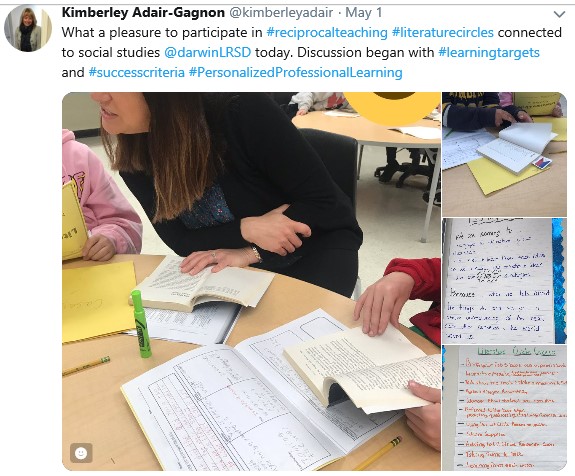
Staff collected formative and summative assessments throughout the year that provided evidence that Reciprocal Teaching was making a difference in improving overall reading comprehension in our kindergarten through grade six classrooms. It was not until reviewing the Our School Survey results that we were able to see how great an impact this work had on our learners. Each year, Darwin School adds two open ended questions to the Our School Survey that is administered by The Learning Bar to students in grades 4 – 8. Last year, we chose the following as one of our two questions to further gauge if students had locked the Fab 5 into their long-term memory.
Our school question #1:
Please describe the reading strategies you have learned in English Language Arts class.
An extremely high percentage of students in grades 4, 5 and 6 outlined how they are learning the Fab 5 Reciprocal Teaching strategies. Most continued writing at great length to further explain the difference between predicting, questioning, clarifying, summarizing and connecting. The greatest evidence of learning was displayed by students who referred to specific parts of text they had read to demonstrate not only their connections to the text but their ability to summarize, develop thin and thick questions and highlight words they needed to clarify.
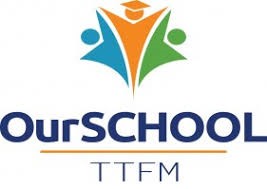
At Darwin School, we look forward to continuing our work with Reciprocal Teaching in the 2019-2020 school year as our K-6 staff introduce and model its impact for our Grade 7&8 classroom teachers. With a re-structured Middle Years model unfolded this year, we look forward to seeing how our k-8 learning community can continue to learn and grow together at Darwin School.
This snapshot of the literacy work that took place at Darwin School in the 2018-2019 school year is one highlight. Please follow us on Twitter @darwinLRSD and make sure to check out the Darwin School Spotlight News Stories at Darwin School Portal for a more in depth look at the incredible work taking place in our school.
Hattie, John. (2012). Visible Learning for Teachers: Maximizing Impact On Learning. New York City, NY: Routledge
Oczkus, Lori D. (2018). Reciprocal Teaching at Work: Powerful Strategies and Lessons for Improving Reading Comprehension. Alexandria, VA: ASCD


